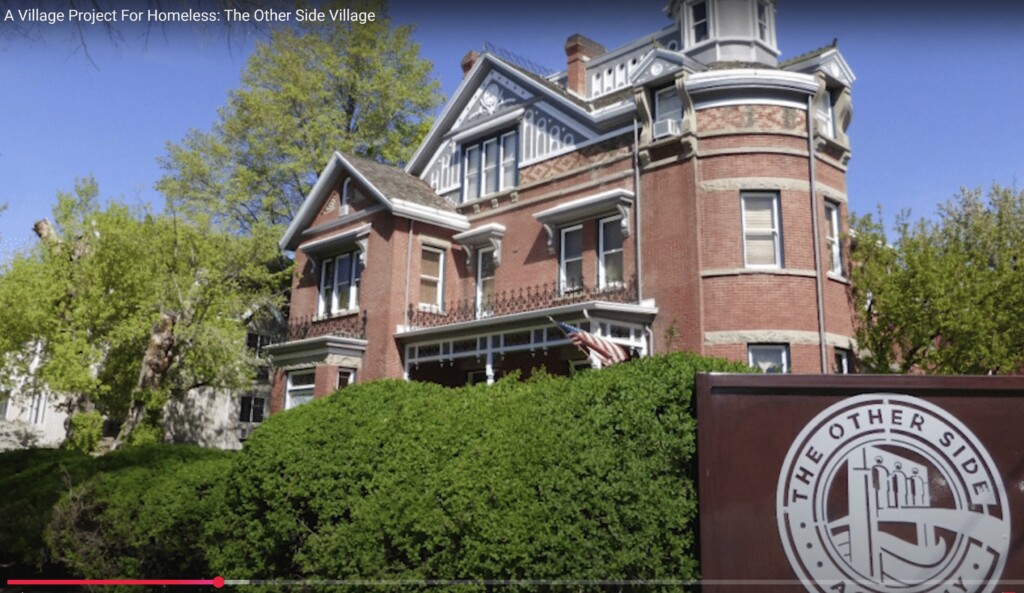Over the past decade, Utah’s homelessness crisis has only gotten worse. Billions of dollars have been poured into so-called “solutions,” yet the number of tents lining the streets of Salt Lake City keeps growing. So why are traditional methods failing, and who’s truly benefiting from all this spending?
In steps The Other Side Village—a radically different project that’s bypassing bureaucratic red tape and tackling the problem head-on with a unique, peer-led approach. I sat down with Preston Cochrane, CEO of The Other Side Village, to understand how this model works and why it’s delivering the kind of results that government programs can only dream of.
Peer-Led, Not Bureaucrat-Run
One thing that stood out immediately during my conversation with Cochrane is his passion for genuine, grassroots change. Unlike typical homelessness programs filled with layers of caseworkers and administrators, The Other Side Village operates with a simple but powerful principle: Let the people who’ve experienced homelessness run the program.
Cochrane explains, “From the top down, it’s peer-led and peer-run. Our leadership consists of graduates from The Other Side Academy—people who’ve lived through addiction, incarceration, and life on the streets. They know the manipulation tactics, the struggles, and, most importantly, they know how to build rapport.”
It’s a stark contrast to the standard government-funded programs that rely on a revolving door of social workers who, while well-intentioned, often lack the street smarts and lived experience needed to connect with the homeless population.
Why Government Programs Are Failing
The data on government interventions is damning. Despite millions of taxpayer dollars being spent on 30-, 60-, and 90-day treatment programs, the success rates remain dismal. Cochrane doesn’t mince words when it comes to pointing out the flaws.
“When insurance runs out after 60 days, do you really think someone is ready to re-enter society?” Cochrane asks, shaking his head. “The answer is no. That’s why our program at The Other Side Academy lasts up to 30 months. It takes that long to recalibrate a person’s moral compass and give them the tools they need to change their lives.”
He raises a valid point—if homelessness is only getting worse despite all the spending, shouldn’t we be questioning the effectiveness of these traditional approaches? Cochrane believes the answer lies in the difference between short-term fixes and long-term, sustainable solutions.
Changing the Equation
Utah’s “Housing First” strategy, which has been heavily touted by local politicians, may sound good on paper, but in practice, it’s riddled with issues. Housing without accountability often turns into subsidized drug dens. Cochrane doesn’t hold back on this criticism.
“If you provide housing with no expectations, why would anyone stop using drugs?” he asks. “It’s a systemic failure. We focus on the human element—what’s causing the homelessness in the first place, not just the symptom.”
The Other Side Village takes a different approach. It offers temporary housing, hygiene services, and community support, but it’s not a free ride. Residents are expected to work, contribute, and eventually pay rent as they reintegrate into society.
Accountability: The Missing Ingredient
At the Solutions Utah Conference, Governor Cox mentioned a glaring issue that’s been ignored for too long: the lack of accountability in homeless services. Cochrane was there and agrees wholeheartedly.
“There’s no return on investment,” Cochrane says bluntly. “We’re spending millions without measuring outcomes. It’s the definition of insanity—doing the same thing over and over and expecting different results.”
This is where The Other Side Village sets itself apart. Instead of relying on endless grants and taxpayer funding, it operates like a business, running social enterprises that fund its initiatives. One of their newest ventures is a gourmet donut shop on 760 South Redwood Road—a sweet way to support their mission while providing jobs for residents.
The Real Impact: Transforming Lives
The results speak for themselves. According to Cochrane, The Other Side Academy boasts success rates of up to 90% for graduates who remain drug-free, crime-free, and employed. Compare that to the abysmal 5-10% success rates of government-funded programs, and it’s clear that something different is happening here.
“When you walk through our community, you see people who’ve hit rock bottom but decided they want to change,” Cochrane shares. “They’ve pulled themselves out of encampments because they’re tired of living that life. And we’re here to give them a hand up, not a handout.”
The change is visible in the faces of the residents—there’s a light in their eyes, a sense of purpose that many of them thought was lost forever. It’s a reminder of what’s possible when we treat people as people, not statistics.
A Brighter Future for The Other Side Village
The first tiny homes at The Other Side Village are expected to be ready within the next year, providing a stable, supportive environment for Utah’s most vulnerable residents. Cochrane is optimistic about the future, but he’s also realistic about the challenges ahead.
“We’re not a catch-all solution,” he admits. “But our model works because it goes deeper. It’s about behavior, accountability, and building a community where people feel they belong.”
The Other Side Village is proving that there’s a better way to address homelessness, and it starts with the basics: trust, respect, and the willingness to do the hard work. For those looking to support a program that’s actually making a difference, Cochrane invites you to visit their bench at 660 East First South or try one of their gourmet donuts.
“This is about changing lives,” Cochrane says with a smile. “And we’re just getting started.”
If you’re tired of seeing your tax dollars wasted on ineffective solutions, consider supporting The Other Side Academy. Visit The Other Side Academy to learn more or make a donation. And if you want to keep up with the real stories that the mainstream media isn’t covering, subscribe to Utah Stories’ digital newsletter today.






